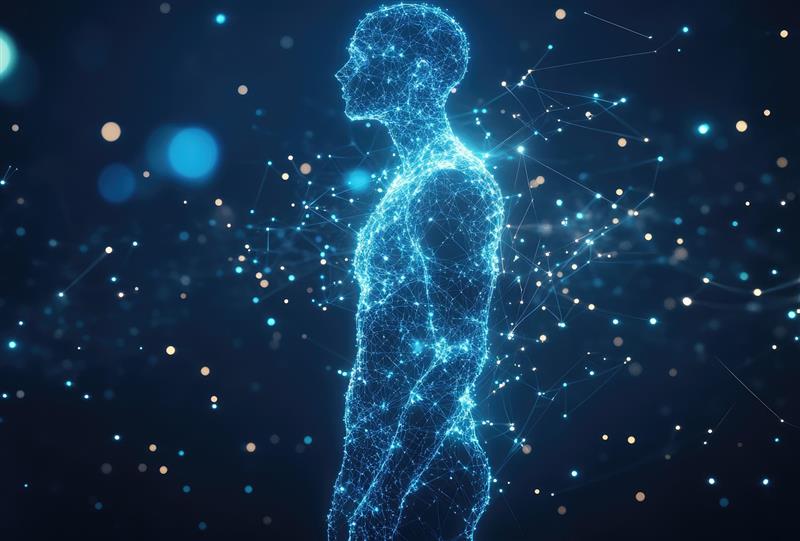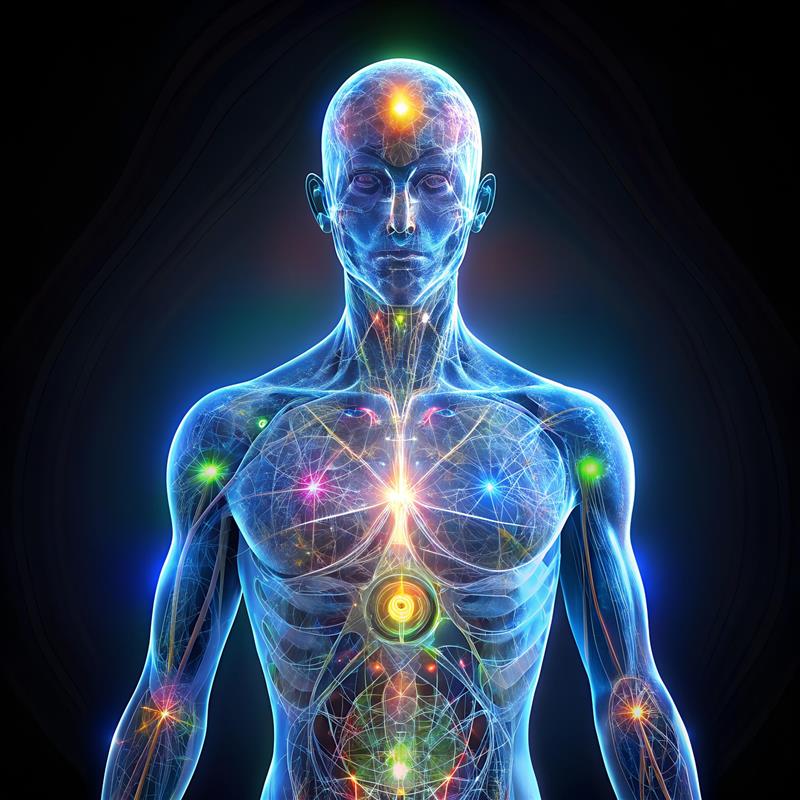The Foundations of Energetic Health
Understanding Energy in the Human Body
Welcome back to our educational series on the Physics/Energy Model of Health, where in our first class we introduced the concept that health extends beyond biochemistry to include the energetic dimensions of human physiology; today, we’ll delve deeper into the foundations of energetic health by exploring what energy actually means in the context of the human body, examining its various distinct yet interconnected forms such as
Biochemical Energy
At the most basic level, our bodies produce and utilize biochemical energy, primarily in the form of adenosine triphosphate (ATP). This molecule serves as the fundamental currency of cellular energy, powering everything from muscle contractions to neural signaling. While this form of energy is acknowledged in the conventional biochemical model, it represents just one aspect of our energetic makeup.
Bioelectrical Energy
Our bodies are also bioelectrical systems. Every cell maintains an electrical potential across its membrane, and specialized cells like neurons and muscle cells use electrical signals for communication and function. The heart generates the strongest electromagnetic field in the body, which can be measured several feet away from the physical body using sensitive instruments.
Biophotonic Energy
Research has shown that all living cells emit weak light called biophotons. These ultra-weak photon emissions are coherent, suggesting they may play a role in cellular communication. Some scientists propose that this light-based communication system might operate alongside our biochemical and bioelectrical systems, forming a complex network of information exchange within the body.
Bioelectrical Energy
Beyond the measurable forms of energy lies what many traditions call “subtle energy” or “life force energy.” Known as Qi in Traditional Chinese Medicine, Prana in Ayurveda, or Ki in Japanese healing arts, this form of energy is considered the fundamental animating force that distinguishes living beings from inanimate matter. While more challenging to measure with conventional instruments, its effects can be observed through various healing modalities and energy medicine practices.
The Biofield: Your Body's Energetic Blueprint
Surrounding and permeating your physical body is what scientists and energy practitioners call the “biofield”—an organized, complex network of electromagnetic and subtle energy fields that carry information and influence physiological processes.
Components of the Biofield
The biofield consists of multiple layers or aspects:
- Electromagnetic Component: This includes the measurable electromagnetic fields generated by the heart, brain, and other organs, which extend beyond the physical body.
- Quantum Field Component: At the quantum level, particles that make up our bodies exist in a state of probability and interconnectedness, creating fields of information that may influence biological processes.
- Informational Component: The biofield is thought to store and transmit information that guides physiological processes, similar to how DNA stores genetic information.
- Morphogenetic Component: Building on biologist Rupert Sheldrake’s work, this aspect of the biofield may contain the templates or blueprints for physical structures and functions.

Functions of the Biofield
The biofield serves several critical functions:
- Integration: It helps integrate the various systems of the body, ensuring they work together harmoniously.
- Regulation: It helps regulate physiological processes, maintaining homeostasis and adapting to changing conditions.
- Communication: It facilitates rapid communication between distant parts of the body, potentially faster than neural or hormonal signaling.
- Memory: It may store information about past experiences, traumas, and patterns that influence current health.
- Healing: It plays a role in the body’s innate healing processes, directing resources and information where needed.
Organ-Gland Systems as Energetic Centers
In the Physics/Energy model, each organ and gland is more than a physical part—it’s an energetic center with specific vibrations:
- Heart – Generates the body’s strongest electromagnetic field; linked to emotions and coherence.
- Brain – Emits complex energy patterns tied to thought, emotion, and awareness.
- Digestive System – Processes both food and emotional experiences.
- Liver/Gallbladder – Energetically linked to detoxifying physical and emotional states like anger.
- Kidneys – Store vital life energy; associated with fear and willpower.
- Endocrine Glands – Mirror chakra functions; regulate hormones and energy flow.

Interconnectedness of Systems
A key principle in the Physics/Energy model is that these organ-gland systems don’t operate in isolation. They form an interconnected network, constantly communicating and influencing one another through:
- Energetic Pathways: Similar to meridians in acupuncture, these channels allow energy to flow between different systems.
- Resonance: Organs with similar vibrational frequencies can affect each other through resonance, even when physically distant.
- Harmonic Relationships: Just as musical notes form harmonies, organ systems create energetic harmonies that can be either coherent (health-promoting) or dissonant (potentially leading to dysfunction).
- Feedback Loops: Energetic changes in one system create ripple effects throughout the entire network.
The Role of Micronutrients in Energetic Health
Micronutrients—such as vitamins, minerals, and antioxidants—are essential not just for physical health, but for energetic balance as well. In the energetic model, they act as catalysts that support the body’s natural energy flow, stabilize vibrational patterns, and protect the biofield from disruptive influences. These nutrients help maintain coherence between physical and energetic systems, making them key to overall well-being.
A deficiency in key micronutrients can lead to energetic imbalances that may manifest as fatigue, mood shifts, or chronic tension.
How Micronutrients Support Energetic Function
Micronutrients contribute to energetic health by fueling ATP production, supporting electrical signaling in nerves and muscles, and maintaining the vibrational harmony of tissues and organs. Antioxidants help shield the energy field from oxidative stress, while other nutrients assist in converting energy between forms to support dynamic balance. Together, they help sustain a steady, resilient, and aligned energetic state.
Optimal energetic function depends on a steady supply of these micronutrients through food, supplements, or mindful lifestyle choices.


